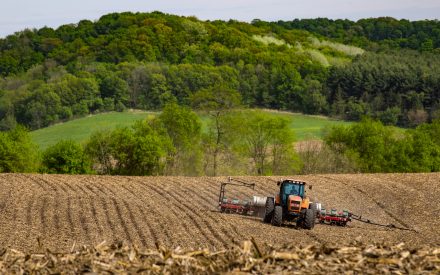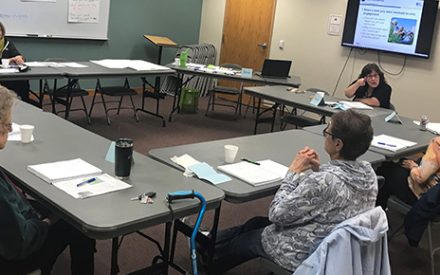It should come as no surprise that Wisconsin’s largest agricultural commodity is milk totaling $5.7 billion in cash receipts, after all, Wisconsin is known as the Dairy State. Wisconsin’s dairy industry encompasses over 6,500 farms across the state. These farms are continually searching for new management strategies that will help them be both innovative and better animal stewards.
Researchers at the University of Wisconsin–Madison and the University of Wisconsin–River Falls are continually discovering what innovations might help dairy farmers. Research topics include a variety of disciplines including reproductive physiology, nutrition and animal welfare.
While this may seem like a large range in topics, dairy farmers are concerned about the animals they care for and their overall health and wellbeing. Many even collect daily data on each cow, which helps tell them many things such as if an animal drank less water than the day before, suggesting she might not be feeling so great.
“One of the first places we look for information is Extension. Extension helps us get off the ground with new ideas and on- farm research.”
Dairy farmer in Door County
Protecting Animal Wellness and Economic Vitality
In response to Wisconsin dairy farmers’ desire for innovative management strategies, Extension researchers and educators worked together to develop and deliver programming surrounding recent research findings. These recent research findings are ready for farmers to use and put into practice as they were generated in Wisconsin, on dairy farms.
Extension researchers and educators used a blended outreach approach using webinars, factsheets, and popular press articles surrounding topics including reproduction, heifer management, forages, silage, animal care, and data management.
Over 850 Wisconsin dairy farmers and countless agribusiness professionals working with 7,500+ dairy cows attended six webinars and/or reviewed recorded content to learn about managing heifers, using cocktail forage mixtures in dairy rations, pair-raising calves, and more.
These outreach activities helped producers think critically about their own production management decisions and what they could do differently to incorporate research findings, allowing them to be better animal stewards and become innovative farmers. Using research findings to inform business practices helps farms find ways to remain economically viable and to ensure farm owners and employees are able to stimulate local economies.
Farmers Understand the Benefits of Innovation
Reflective evaluation data was challenging to capture as many attendees chose not to participate in virtual evaluation methods. Based on our limited findings, a majority of dairy farmers currently individually housed calves and are interested in or ready to start pair-housing calves due to educational programs and success stories. Additionally, of those who completed virtual evaluations, all understood the benefits of pair-housing calves compared to individually housing calves.
Farmers were also interested in making additional management changes such as improving disbudding pain mitigation and realize the importance of time of breeding based on weight, not age, in heifers for lifelong herd longevity.
With access to research that’s relevant to farmers and conducted on farms, dairy producers will better understand recent research and how they can implement it on their farm to become better animal stewards and more innovative farmers while remaining economically viable. In turn, dairy farm owners and employees may stimulate local economies.
Download Article

 In-Season Support for Crop Management Decisions
In-Season Support for Crop Management Decisions Centering Culture & Language in Leadership Programs
Centering Culture & Language in Leadership Programs Growing Community Health through Gardens
Growing Community Health through Gardens Improving the Health of Older Adults
Improving the Health of Older Adults


